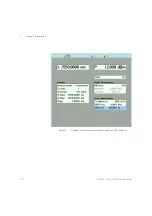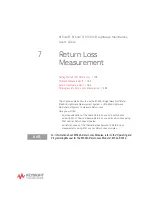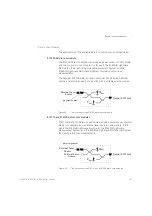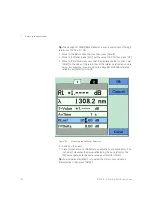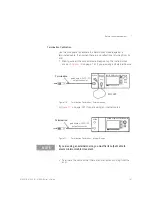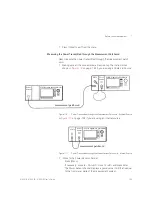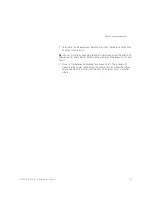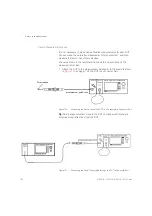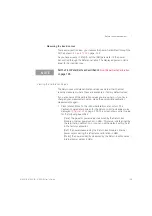
8163A/B, 8164A/B, 8166A/B User’s Guide
187
Return Loss Measurement
7
subtraction becomes inaccurate when the T-value is not sufficiently high.
Therefore, it is imperative for measurements of high return losses that the
T-value is as high and as stable as possible. A "rule of thumb" is that one
can only measure 5-10 dB higher return losses (lower reflections) than the
T-value, meaning if a T-value of 65 dB is achieved after calibration it is
possible to measure accurate return losses up to 70 or 75 dB. The
equation for the T-value is as follows:
Where:
P
ref
is the reflected power from the measurement path at the return loss
diode when making a reference calibration.
P
para
is the backward-flowing power from the measurement path at the
return loss diode when making a terminated/parasitic calibration.
M
ref
is the power at the source monitor diode when making a reference
calibration.
M
para
is power at the source monitor diode when making a
terminated/parasitic calibration.
RL
ref
is the return loss reference value set by the user for the reference
calibration.
These parameters are made available using the "Show Calibration " menu
item, or using the GPIB query:
SENSe [n ]:[CHANnel [m ]]:RETurnloss:CALibration:VALUES?
Figure 105
Reflectance Calibration using RL Reference
Summary of Contents for 8163A
Page 17: ......
Page 86: ...8163A B 8164A B 8166A B User s Guide 85 Additional Information 2 Figure 47 MAC Address...
Page 99: ......
Page 133: ......
Page 213: ......
Page 298: ...8163A B 8164A B 8166A B User s Guide 297 Applications 10 Figure 183 Low Dynamic Range...
Page 310: ...8163A B 8164A B 8166A B User s Guide 309 Applications 10 Figure 190 Printed Results...
Page 313: ......
Page 345: ......
Page 453: ......




